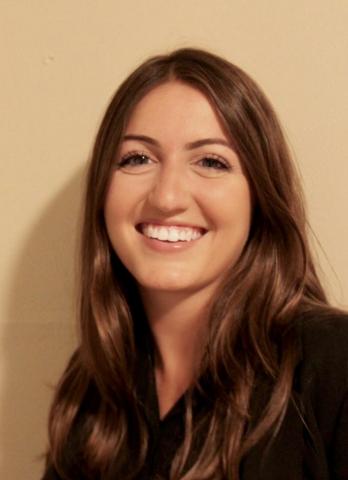
EVERY KID DESERVES ACCESS TO QUALITY PUBLIC SPACES
FOR PLAY. GEHL INSTITUTE IS ALWAYS INTERESTED IN
LEARNING FROM ACTIVISTS AND PROFESSIONALS WITH
DIFFERENT APPROACHES TO ACHIEVING THEIR VISION
OF A MORE KID-FRIENDLY PUBLIC REALM.
In part one of “Spaces of Play,” we chatted with James Siegal, CEO of KaBOOM! about his work at the U.S. non-profit whose mission is to provide more children with opportunities for active play in their everyday lives. Since it was founded in 1996, KaBOOM! has built or improved over 16,700 playspaces serving over 8.5 million children. Much of the organization’s work focuses on building in underserved communities that otherwise lack quality spaces for children to play and do not have the resources to build them.
Gehl Institute: What would you say is the most important aspect to keep in mind when building a playground to ensure that it is a public space enjoyed by all?
James Siegal: One of the most important aspects for KaBOOM! is getting input from the children in the neighborhood we’re working in. We begin each project with a design day, where we ask the local kids in the community to design and draw their dream playground. After this, we ask for input from community leaders and parents. This process helps to ensure that the enhancements KaBOOM! is making will meet the needs and wants of the community. When the community is involved in the design process, it gives them sense ownership over their new space.

children the childhood they deserve filled with balanced and
active play, so they can thrive.
Gehl Institute: Do you think that the needs of children go unaddressed in many urban planning and design efforts? Why do you think that is?
James Siegal: In a lot of design initiatives, kids become an afterthought. The revitalization of cities today is largely geared toward young adults, focusing on the needs of single people rather than families with small children. It’s shortsighted, however, for cities not to think about the fact that many of these young, single people may eventually have children. If a city is not kid-friendly, then these young adults-turned-parents will have to move to the suburbs. When designing a city around the needs of one age group, public life and other public domains can suffer greatly. By changing how people gather in a public space, a momentum can be created for addressing other needs, like those of children.
Gehl Institute: In Denmark, playgrounds tend to be less programmed. For example, children are often encouraged to simply play in the forest or come up with their own games by drawing with chalk on asphalt. Whereas in the U.S., playgrounds are more uniform in design and have less room for creativity. In that respect, do you think there is such a thing as “over-designing” a space for play?
James Siegal: Denmark offers amazing spaces for play. However, communities that are served by KaBOOM! often don’t have any playgrounds at all. There are even many public schools in the U.S. that do not have playgrounds for their students. Innovative play spaces are a second-order problem for us, as we are focused on providing kids the opportunity to play in any way. These new types of playgrounds are often seen in more affluent communities, which is not where we are focused.

Gehl Institute: When designing and building playgrounds, do you often run into issues relating to zoning laws or other regulations that inhibit your designs? If so, how do you approach solving those issues?
James Siegal: Zoning regulations are always a factor, but they are not one of the biggest inhibitors to our designs. The restrictions and requirements for playground design have, for the most part, already been internalized by the designers of the playground equipment that we use. We are more likely to run into restrictions to the design because of our timeline. We build these playgrounds in about six hours with the help of around 200 volunteers, which can restrict the intricacy of a playground design. Other restrictions might come from the concerns of the specific city we are working in. Many communities we work in are worried about vandalism in the playgrounds, so our biggest design restriction for those projects will come from needing to provide a durable space with low maintenance.
 Gehl Institute: It seems that a lot of your work focuses on playgrounds in city settings. Do you also work in suburban areas? Are there unique challenges and different kinds of of needs posed in these two settings?
Gehl Institute: It seems that a lot of your work focuses on playgrounds in city settings. Do you also work in suburban areas? Are there unique challenges and different kinds of of needs posed in these two settings?
James Siegal: We do most of our work in urban environments. Dense urban areas are convenient and hard to miss; we focus on them in part because we can reach a larger number of people. In more suburban settings, you may need to put more effort into branching out to community partners in order to get people involved in using the space.
Gehl Institute: Are playgrounds enough to make a city more playful?
James Siegal: There are a lot of factors that contribute to making a city playable. Longstanding investment and improving safety for children are drivers behind this goal. You need both innovation to get people excited about this idea and also other involvement from schools, parks, and housing developments in order to integrate play into a city. Incorporating play into city parks can be the most complicated because questions arise as to who is responsible for ensuring that kids use the park. In communities that are under-resourced, there are often no parks at all, or they are in too poor of a condition to be used. 
This article was reprinted through the courtesy of the Gehl Institute. Read the original article here. All images from KaBOOM!.

